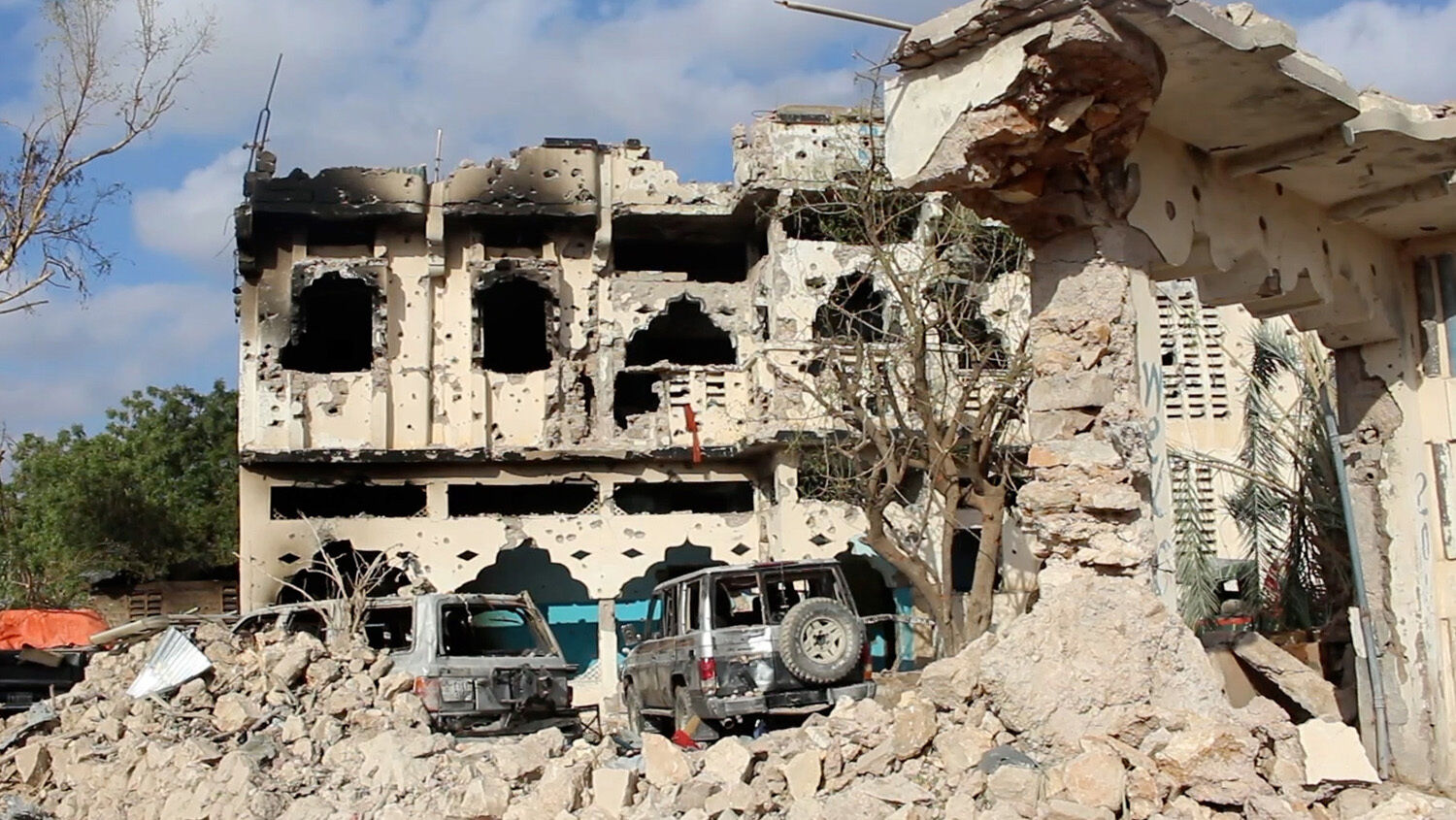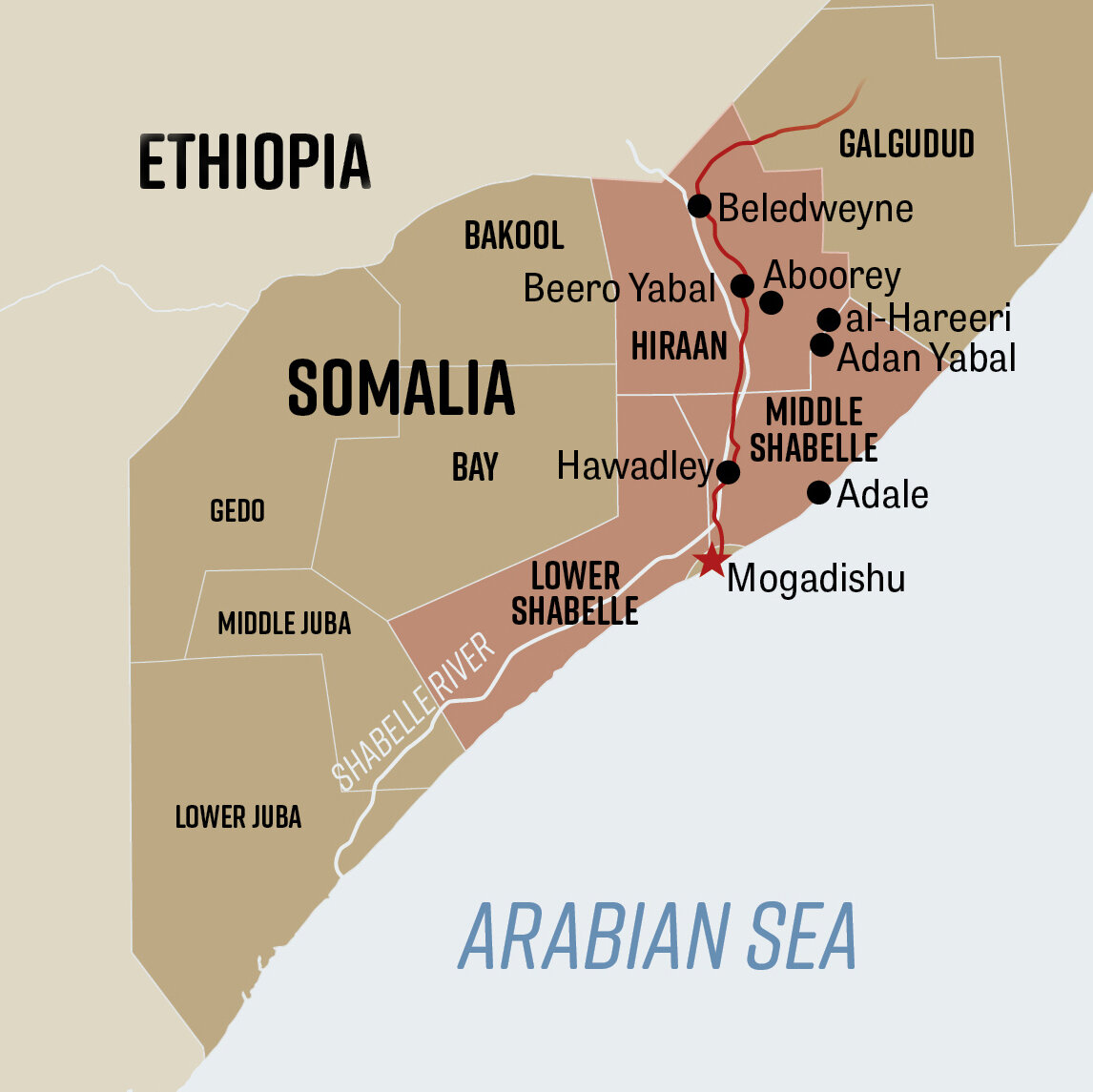
Somalia—Iran’s Next Puppet State?
Al-Shabaab is stronger and more emboldened than ever. On June 11, the terrorist group seized al-Hareeri, a strategic village where a network of roads that lead to major Somali areas overlap. Eight days prior, al-Shabaab took Hawadley, a village about 40 miles north of Somalia’s capital, Mogadishu. This town is also very strategic as it lies on a major highway leading to the capital.
The war in Somalia is easy to overlook; after all, most news sources are ignoring it. However, this conflict could put a major Western enemy firmly in control of a strategic region. The world should pay attention to what’s happening in Somalia—more importantly, what an al-Shabaab victory would mean for Africa, the Middle East and the rest of the world.
Context
Al-Shabaab has been at war with the Somali government since its founding in 2006. Its numerous victories gave it control over large portions of central and southern Somalia.
However, a 2022 offensive by the African Union, Turkey and the United States beat back the terrorist group. It lost swaths of territory and became divided. Major regions under al-Shabaab control were cut off from one another, reducing the group’s power.
But al-Shabaab is back. On February 20, it launched a major offensive to reconnect its areas of control. It coordinated attacks on villages in two administrative regions near Mogadishu—Hiraan and Middle Shabelle (see map). In March, the group opened another front south of the capital.
Most expected the offensive to end quickly because of the divisions in al-Shabaab’s areas of control and Somalia’s wet season, which starts in April and makes it difficult for armies to move efficiently. But the offensive did not slow down. In April, al-Shabaab took three strategically significant areas: Beero Yabal, Aboorey and Adan Yabal.

- Beero Yabal lies on the main road connecting Mogadishu to Hiraan’s capital, Beledweyne. This victory put al-Shabaab within 45 miles of the two remaining areas it hasn’t taken in Hiraan. Taking these two areas would reconnect region under its control, making it difficult for Somali troops to redivide al-Shabaab’s forces.
- Aboorey’s capture was significant for a similar reason. The town connects several al-Shabaab areas of control and could play a significant role in relinking its forces.
- Adan Yabal is the crown jewel of this offensive. Before Somali forces took the town in 2022, al-Shabaab used it as its administrative headquarters and weapons manufacturing hub. Adan Yabal, which is about 150 miles north of the capital, is a significant strategic area. It is equidistant from many key Somali villages, making it a major crossroads. Its capture would allow al-Shabaab to pressure other district capitals, the Galgudud region and a major highway that not only connects Hiraan, Middle Shabelle and Mogadishu, but sits along the vital Shebelle River. Losing these areas “would undermine the [Somali government]’s domestic and international credibility in its ability to eventually retake its national territory from al-Shabaab,” according to Critical Threats.
In the midst of all these victories north of Mogadishu, al-Shabaab’s offensive south of the capital has also overwhelmed Somali forces. In March, this offensive successfully reestablished connections between troops in central and south Somalia. It even captured some Mogadishu suburbs a mere 30 miles away from the capital’s administrative border. This area is crucial to the Somali Army’s ability to defend Mogadishu’s southern flank because of its bridges connecting to a major road leading to Mogadishu.
Somalia’s forces do not have the strength to combat al-Shabaab. Morale is falling fast, and many soldiers are abandoning their posts. In addition to this, the U.S. and European Union have reduced their soldiers in the region. International organizations are hesitant to send in aid because of past human rights violations. The United Nations has struggled to come up with a peacekeeping mission that nations can agree on. If a deal can’t be reached, Somalia may be left without the support it needs. The U.S. is also seriously considering disbanding its Africa Command.
The war isn’t over for the Somali government, but these blows will be hard to recover from. The Army will have to focus on maintaining a strong defensive stance at its capital. According to WarFronts’ April 23 newsletter, “Somalia appears poised to lose its own heartland to al-Shabaab control and will need to cut its losses and hold new defensive positions, to prevent even further deterioration.”
An al-Shabaab takeover of Somalia would mean much more than a change of government in a far-off African nation. It would strengthen a major Western enemy’s grip on one of the most strategic places on Earth: the Red Sea.
Iran
Al-Shabaab has strong links to Iran. In 2017, Tehran allowed the group to use Iranian ports to dodge UN sanctions. There are also reports that Iran has funded al-Shabaab.
The unrest in Somalia has given Iran an opportunity to assert its influence in the region, and it has largely done so through its Yemeni proxy, the Houthis. The Houthis have acted in the Red Sea not only to hurt Israel but also to support developments in “several African countries,” according to leader Abdul-Malik al-Houthi.
Much of Houthi weapons imports come from Somalia. A February UN report said Houthi and al-Shabaab leaders met in Somalia in July and September last year. In June, U.S. intelligence said al-Shabaab discussed an arms deal that would significantly empower the terrorist group. The Houthis have also reportedly helped train al-Shabaab militants.
It has been reported that the Houthis sent representatives to Somalia between November 2023 and May 2024 to gather intelligence on Red Sea maritime traffic in exchange for weapons. In October 2024, UN experts noted that a third of the vessels the Houthis attacked were out of their Yemeni radar range, indicating they had help from elsewhere in the region. Some experts suggested the Houthis might start attacking Red Sea traffic from Somalia in addition to Yemen.
“Iran is at the center of all this,” according to Somali scholar Guled Ahmed of the Middle East Institute. Danny Citrinowicz, a fellow at the Institute for National Strategic Studies’ Iran Program and former head of the Iran desk at Israel’s military intelligence research division, referred to the Houthis’ exploits in Africa as “the tip of the [Iranian] spear.”
Iran relies on the Houthis to attack Red Sea traffic, while the Houthis rely on Somalian non-state actors—including al-Shabaab—to supply weapons. In February, Somali security forces intercepted a ship reportedly transporting weapons from Yemen manned by Somali citizens. Al-Shabaab said it would further disrupt Red Sea traffic by increasing piracy in the area—and that’s exactly what happened.
With Houthi support, [al-Shabaab] poses a much more serious threat—from piracy to direct attacks on shipping. If al-Shabaab manages to seize control of Somali territory, it will be a major gain for the Houthis. Ideological differences don’t matter when strategic interests align.
—Danny Citrinowicz
Citrinowicz said the Houthis are now Iran’s African proxy. African soldiers have reportedly begun fighting alongside Houthi terrorists. According to Citrinowicz, the Houthis likely intend to set up an operational base in the Horn of Africa and increase their influence by recruiting local non-state players. “The Houthi issue must be viewed through an African lens as well,” he said.
Yemen-based journalist Abdullah Mohsen al-Shadli asked, “What better way than forming ties with extremist groups in Somalia, where the chaos closely mirrors Yemen’s situation?”
Through the Houthis, Iran is moving into Somalia. Iran’s exploits in the region are part of a trend that will soon affect the whole world.
Somalia in Prophecy
Notice Daniel 11:40: “And at the time of the end [the time we are in today] shall the king of the south push at him: and the king of the north shall come against him like a whirlwind ….” In his free booklet The King of the South, Trumpet editor in chief Gerald Flurry identifies the king of the south as radical Islam led by Iran.
Daniel 11 shows which nations will be allied with Iran in this coming clash. “But he [the king of the north] shall have power over … all the precious things of Egypt: and the Libyans and Ethiopians shall be at his steps” (verse 43).
The Bible’s reference to Ethiopia could also include neighboring nations on the Horn of Africa, such as Djibouti, Eritrea and Somalia. This area is of strategic importance because of its proximity to the Red Sea. Iran is prophesied to control Ethiopia, so it will undoubtedly be heavily involved in its neighboring nations.
Because of these prophecies, the Trumpet has warned of these developments for decades. Even after the fall of Hezbollah and Syria’s Bashar Assad, when many thought Iran’s “Axis of Resistance” could be finished, the Trumpet stated boldly that Iran would shift its focus to Africa. News coming out of the area has led Citrinowicz to refer to Iran’s exploits in Africa as Tehran’s “Axis of Resistance 2.0.”
As Daniel 11 shows, Iran’s growing influence in Somalia is leading to a clash with the king of the north. This clash will kick-start a nuclear World War iii that will affect every person on Earth. But that is not the end of the story.
To learn more about these developments and where they will lead, read The King of the South.
